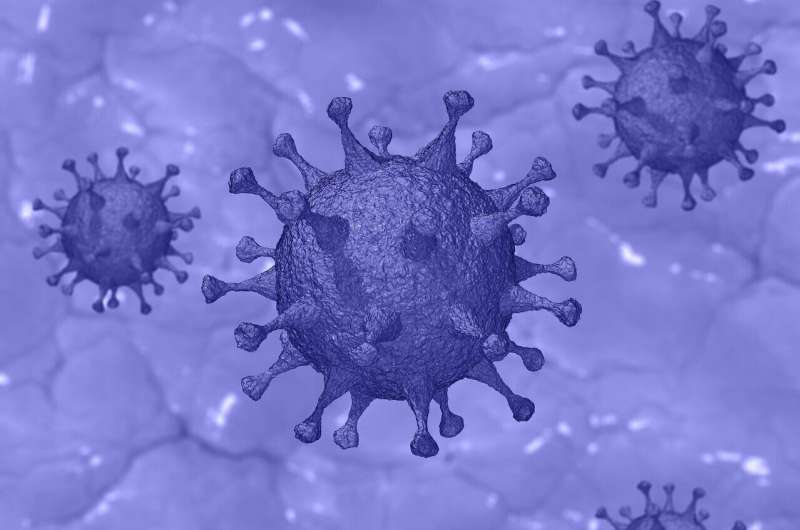Credit: CC0 Public Domain
When the COVID-19 pandemic shut down research laboratories across the country, several labs at Boston Children's Hospital geared up, including that of Wesley Wong, Ph.D. He and his team responded to the threat by developing a new, easy diagnostic test for COVID-19.
"Our technology, a DNA nanoswitch, is a new way of probing a test sample for evidence of infection," says Wong, of the Program in Cellular and Molecular Medicine (PCMM) at Boston Children's, Harvard University, and the Wyss Institute. Wong and his colleagues have been developing DNA nanoswitch technology for several years, so they were able to pivot quickly to apply it to COVID-19 diagnosis.
What is a nanoswitch?
The DNA nanoswitch starts with a piece of single-strand DNA. Attached to either end of that DNA are compounds that interact with molecules that a researcher wants to study—such as antibodies to a protein made by a virus.
Once added to a blood serum sample, the DNA/antibody nanoswitches float along as sentries looking for their targets. Once they find them, the antibodies bind tightly. The bond between the pair of antibodies and the protein causes the DNA to change shape, shifting to a closed circle or loop shape. If no target is found, the DNA strand remains open in an unlooped position.
Detecting virus, antigens, or antibodies
Wong's nanoswitch technology, which is not yet used yet used clinically, has shown promise in research studies for other diseases, including detection of prostate specific antigen, a marker of prostate health.
For COVID-19, Wong is engineering a trifecta of DNA nanoswitches. They can detect the spike protein of the SARS-CoV-2 virus that causes COVID-19, antibodies produced after exposure to the virus, or RNA made by the virus itself.
"Used together on a single sample, one could theoretically detect the presence of the virus during an active infection or antibodies produced afterwards," says Wong.
A COVID-19 DNA nanoswitch in action. Credit: Sebastian Stankiewicz/Boston Children’s
Using common lab tools
Test results are read out by a simple gel electrophoresis system, a common analytical tool in many laboratories that sorts DNA and proteins by size and shape based on their downward movement through a gel. With a positive result—a closed loop—the sample seems to get caught and slows down, staying higher in the gel. A negative result passes through the gel to the bottom.
"The gel electrophoresis technique means the test can be done without a lot of expensive equipment and skilled technicians, and an answer can be available fairly quickly," says Wong.
But Wong envisions simplifying things even further—especially as a rapid, on-site COVID-19 testing is needed more than ever.
"The ultimate goal would be to have something that is as easy as a pee stick, but as sophisticated and accurate as a laboratory system," he says.
Testing begins in human samples
In early summer, Wong began collaborating with Stephen Elledge, Ph.D., at Harvard Medical School to test the COVID-19 DNA nanoswitch using human specimens. The rapid test they are developing will not only detect the presence of COVID-19 antibodies, but also provide more information about those antibodies.
"We hope to get some insight into how the immune system responds to infection or vaccination, and maybe even identify the presence of antibodies capable of killing, or neutralizing the virus," says Wong. Preliminary results on patient serum samples show the concept is promising.
Provided by Children's Hospital Boston






















